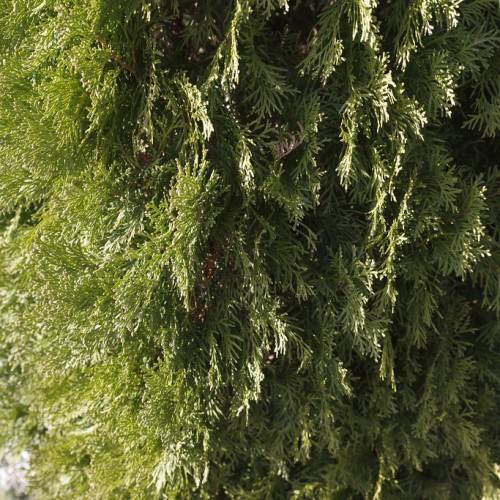
American arborvitae
Thuja occidentalis 'Art Boe' NORTH POLE
Cycle:
Perennial
Watering:
Frequent
Hardiness Zone:
2 - 7
Flowers:
Flowers In Spring
Sun:
Full sun, Part sun/part shade
Soil:
Sandy Loamy Clay Rocky
Fruits:
Fruits In Autumn Ready In Fall
Leaf:
Yes
Growth Rate:
Moderate
Maintenance:
Low
Care Level:
Low
watering
American arborvitae should be watered on a regular basis throughout the growing season. The frequency of watering will depend on climate and soil conditions. During hot, dry weather, the plant will need to be watered more often. In general, it should be watered once a week, applying 1-2 inches of water in a 12 inch area around the base of the plant. It is important to avoid over-watering. Once the top few inches of soil become damp to the touch, the plant is adequately watered. During colder months, it is not necessary to water the plant as often as it should become dormant. In order to ensure that your American arborvitae stays healthy, it is important to maintain proper watering and fertilizing.
sunlight
The American arborvitae (Thuja occidentalis 'Art Boe' NORTH POLE) prefers full sun to partial shade and should ideally receive at least 4 to 6 hours of direct sunlight each day. Partial shade is best in hot summer locations. The plant should be sheltered from strong winds, as these can cause damage to the foliage. For optimum growth, this species prefers moist soil that is well-draining, and it flourishes in soils with a neutral to slightly acidic pH.
pruning
American arborvitae (Thuja occidentalis 'Art Boe' NORTH POLE) should be pruned in early to late spring. Pruning should be minimal and only able to take off a maximum of 1/3 of the plant's foliage at once. Pruning should also focus on removing dead or diseased branches while at the same time keeping the overall shape of the plant. You should also try to preserve the natural size and shape of the plant as much as possible when pruning. Avoid shearing the plant as this will not only look unnatural, but will also disrupt the plants natural growth. Once the pruning is done, make sure to monitor the plant's health and adjust your pruning practices as needed.
